I'm trying to read relatively clear numbers from a screenshot, but I am running into issues getting pytesseract to read the text correctly. I have the following screenshot:
And I know the score (2-0) and the clock (1:42) are going to be in the exact same place.
This is the code I currently have for reading the clock time and the orange score:
lower_orange = np.array([0, 90, 200], dtype = "uint8")
upper_orange = np.array([70, 160, 255], dtype = "uint8")
#Isolate scoreboard location on a 1080p pic
clock = input[70:120, 920:1000]
scoreboard = input[70:150, 800:1120]
#greyscale
roi_gray = cv2.cvtColor(clock, cv2.COLOR_BGR2GRAY)
config = ("-l eng -c tessedit_char_whitelist=0123456789: --oem 1 --psm 8")
time = pytesseract.image_to_string(roi_gray, config=config)
print("time is " + time)
# find the colors within the specified boundaries and apply
# the mask
mask_orange = cv2.inRange(scoreboard, lower_orange, upper_orange)
# find contours in the thresholded image, then initialize the
# list of digit locations
cnts = cv2.findContours(mask_orange.copy(), cv2.RETR_EXTERNAL,
cv2.CHAIN_APPROX_SIMPLE)
cnts = imutils.grab_contours(cnts)
locs = []
for (i, c) in enumerate(cnts):
# compute the bounding box of the contour, then use the
# bounding box coordinates to derive the aspect ratio
(x, y, w, h) = cv2.boundingRect(c)
ar = w / float(h)
# since score will be a fixed size of about 25 x 35, we'll set the area at about 300 to be safe
if w*h > 300:
orange_score_img = mask_orange[y-5:y+h+5, x-5:x+w+5]
orange_score_img = cv2.GaussianBlur(orange_score_img, (5, 5), 0)
config = ("-l eng -c tessedit_char_whitelist=012345 --oem 1 --psm 10")
orange_score = pytesseract.image_to_string(orange_score_img, config=config)
print("orange_score is " + orange_score)
here's the output:
time is 1:42
orange_score is
Here is the orange_score_img, after I masked out everything within my upper and lower orange bounds and applied a gaussian blur.
Yet at this point, and even when I configure pytesseract to search for 1 character and limited the whitelist, I still can't get it to read correctly. Is there some additional postprocessing that I'm missing to help pytesseract read this number as 2?

